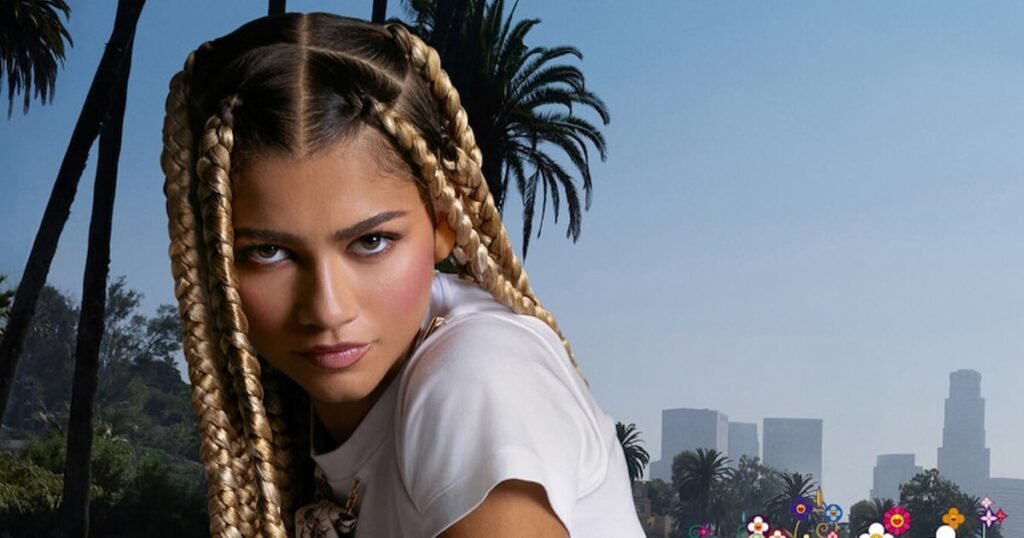
LVMH Moet Hennessy Louis Vuitton SE followed other luxury goods groups and delivered better-than-anticipated sales growth in the final three months of the year.
But the outperformance wasn’t as spectacular as that of Cartier-owner Cie Financiere Richemont SA, or even troubled British brand Burberry Group Plc, which both trounced expectations.
That’s disappointing, given that LVMH is the world’s biggest luxury goods group, with sales of €85 billion ($88.5 billion) last year. Chief executive officer Bernard Arnault will have to do better if LVMH is to make the most of its considerable clout and lift its valuation above that of its nearest rivals.
LVMH delivered sales growth excluding currency movements and mergers and acquisitions of 1 percent in the three months to Dec. 31, ahead of expectations of a 1 percent decline. Sales at the key fashion and leather goods division fell 1 percent, compared with expectations of an almost 3 percent slide.
But net profit slumped 19 percent in 2024 after a €1 billion currency hit from not being able to raise prices to compensate for adverse moves, higher expenses, including its sponsorship of the Paris Olympics, as well as one-time charges, including from sales of the Off-White brand and LVMH’s minority stake in Stella McCartney.
After Richemont’s sparkling performance, led by jewellery, LVMH’s showing looks lacklustre. The shares fell more than 5 percent.
So why didn’t the bling behemoth knock it out of the park too?
Although it owns Louis Vuitton, the world’s largest luxury brand, which seems to be holding up, its second biggest business, Christian Dior, is cooling after a period of phenomenal growth.
Outgoing Chief Financial Officer Jean-Jacques Guiony said Louis Vuitton did slightly better than the overall fashion and leather division, while Dior did slightly worse.
Meanwhile, jewellery sales are booming as price rises for bags make baubles look better value for money. While LVMH owns Tiffany, Bulgari, Chaumet and Fred, none of these are yet as in demand as Richemont’s Cartier and Van Cleef & Arpels. Arnault said Tiffany increased organic sales by 9 percent in the final three months of the year. But Richemont’s jewellery sales rose by 14 percent in the same period.
LVMH generated 25 percent of its revenue in US last year, giving it most exposure to America among the European luxury goods groups, no doubt lifting sales, and boding well for coming years, with Arnault expecting the US to “boom.”
But the company also generated 28 percent of sales from Asia excluding Japan. China isn’t getting any worse; in fact, there was a slight improvement in the fourth quarter. But Arnault predicted a gradual recovery, potentially taking two years for the market to return to normal.
Finally, investor focus is usually on LVMH’s fashion and leather goods division, but sales at its wines and spirits unit fell by a worse-than-expected 8 percent in the final quarter. Meanwhile, its DFS duty free business suffered from fewer Chinese visitors to Macau and Hong Kong, although a strong showing from beauty retailer Sephora offset this.
So how can LVMH get back to exploiting its considerable advantages?
The first task is getting Dior back in vogue. The fashion press has speculated that Jonathan Anderson, who has transformed Loewe into one of the world’s hottest brands, could move to Dior. A new creative direction would be welcome and could turbocharge sales again.
Secondly, it must continue to work on its jewellery names. Arnault described Tiffany as a “sleeping beauty, and we decided to wake her up.” While this led to staff exits and a difficult work culture, Bloomberg News reported, he said the Landmark store on Fifth Avenue was the leading location for the group; jewellery sales had quadrupled since the 2021 acquisition, and profits had doubled. Still, there is more to do to make Tiffany’s Hardwear collection as viral as Van Cleef’s clover jewellery.
As for wines and spirits, Guiony will soon take charge of the division, with Bernard Arnault’s son, Alexandre, his second in command. Arnault senior says they have two years to turn the business round. But what happens after that?
Analysts at Bernstein have suggested that LVMH should spin off the wines and spirits division. Arnault said this wasn’t on the agenda.
This year has started relatively well. Both Louis Vuitton and Tiffany have reported double-digit sales growth, Arnault said, no doubt boosted by the US, the Lunar New Year and the arrival of Louis Vuitton’s reissue of its collaboration with Japanese artist Takashi Murakami, with its multicoloured logos tapping into noughties nostalgia. And, of course, there’s Taylor Swift donning an LV-logoed ensemble. Investors will be hopeful that this is the start of a more sustained recovery, although the recent US tech selloff is a concern.
Otherwise, with LVMH trading on a forward price-to-sales multiple of about 25, a slight discount to Richemont, and less than half of Hermes International SCA’s 55 times, questions over whether its sprawling business empire is a hindrance rather than a helpful diversification will only grow louder.
By Andrea Felsted.

